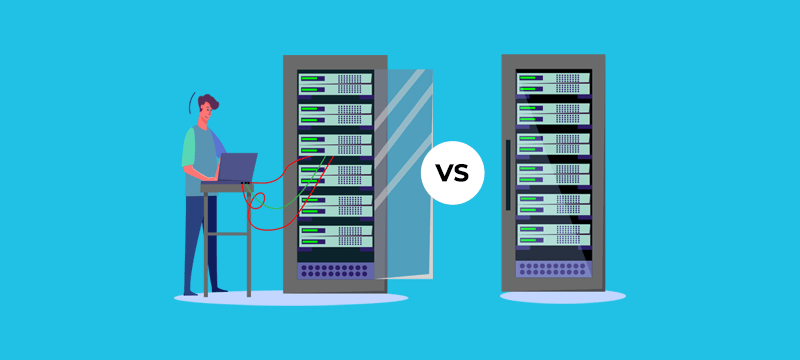Telemedicine is a rapidly growing field that uses technology to provide healthcare services remotely. It has the potential to revolutionize the healthcare industry by increasing access to healthcare, improving patient outcomes, and reducing healthcare costs. With the increasing availability of technology and the growing demand for healthcare services, telemedicine has become an important tool for healthcare providers to deliver healthcare services to patients in remote or underserved areas, as well as to patients who may have difficulty accessing healthcare due to mobility or transportation issues.
In this article, we will explore the various types of telemedicine, including real-time video consultations, remote patient monitoring, and mobile health apps. We will also examine the impacts of telemedicine on healthcare, including its benefits and challenges. Additionally, we will discuss the future of telemedicine and potential developments in the field, such as the use of artificial intelligence, virtual reality, wearable devices, and 5G technology.
While telemedicine has experienced tremendous growth in recent years, it still faces significant challenges, including technical issues, patient acceptance, and regulatory and legal issues. These challenges must be addressed to fully realize the potential of telemedicine and ensure that it can provide high-quality healthcare services to patients worldwide.
Types of Telemedicine
Telemedicine has evolved over the years, and there are various types of telemedicine services available. These include:
- Store-and-Forward Telemedicine: This type of telemedicine involves the transmission of medical data, such as images, videos, and medical records, from one healthcare provider to another for consultation and diagnosis. The healthcare provider receiving the data can then review the information at a later time and provide a diagnosis.
Store-and-forward telemedicine is particularly useful for specialties like dermatology or ophthalmology, where a visual examination of the patient’s condition is sufficient for diagnosis. It is also useful in cases where the patient’s condition is not urgent and requires specialist consultation, but it does not require a face-to-face visit.
- Remote Patient Monitoring: This type of telemedicine involves the use of technology to monitor patients remotely. It is commonly used for patients with chronic conditions, such as diabetes and hypertension, to track their vital signs and symptoms and provide early intervention if necessary.
Remote patient monitoring typically involves the use of wearable devices that collect patient data, such as heart rate, blood pressure, and glucose levels. The data is then transmitted to healthcare providers who can review the data and provide interventions as needed. Remote patient monitoring has been shown to improve patient outcomes and reduce healthcare costs by preventing hospitalizations and emergency room visits.
- Real-Time Telemedicine: This type of telemedicine involves live communication between the healthcare provider and the patient using audio and video technology. It is commonly used for consultations, diagnosis, and treatment.
Real-time telemedicine is particularly useful for patients who live in remote areas or have limited mobility, as it allows them to consult with healthcare providers without having to travel long distances. It is also useful for patients who require urgent medical attention but cannot physically visit a healthcare facility. Real-time telemedicine has been shown to improve patient satisfaction and reduce healthcare costs by reducing the need for in-person visits.
Overall Benefits of Telemedicine
Telemedicine has several benefits, which include:
- Improved Access to Healthcare: Telemedicine has improved access to healthcare for patients who live in remote areas or have limited mobility. It has also made it easier for patients to consult with healthcare providers without having to travel long distances.
Telemedicine has eliminated geographical barriers to healthcare access. Patients who live in remote areas, where there are no healthcare facilities or specialists, can access medical care from the comfort of their homes. This has been particularly useful for patients who live in underserved areas, such as rural communities.
- Reduced Healthcare Costs: Telemedicine has reduced healthcare costs by eliminating the need for in-person visits, which can be expensive due to travel and other associated costs. It has also reduced the need for hospitalizations and emergency room visits.
Telemedicine has reduced healthcare costs by eliminating unnecessary visits to healthcare facilities. Patients who require follow-up consultations, routine check-ups, or non-emergency care can access medical care remotely, which reduces the burden on healthcare facilities and staff.
- Increased Efficiency: Telemedicine has increased the efficiency of healthcare delivery by reducing the wait times for appointments, consultations, and diagnoses. It has also improved communication between healthcare providers, resulting in better coordination of care.
Telemedicine has reduced wait times for medical care by providing patients with immediate access to healthcare providers. It has also improved communication between healthcare providers, enabling them to collaborate and share information quickly and easily. This has improved the coordination of care and reduced the likelihood of medical errors.
- Improved Patient Outcomes: Telemedicine has been shown to improve patient outcomes by providing patients with timely access to medical care. It has also improved patient engagement and participation in their own healthcare.
Telemedicine has improved patient outcomes by providing patients with immediate access to healthcare providers. Patients who receive early intervention and treatment for their medical conditions have better outcomes and are less likely to experience complications.
Benefits of Telemedicine for Healthcare Providers
Telemedicine also offers several benefits for healthcare providers, including:
- Improved Efficiency: Telemedicine allows healthcare providers to see more patients in less time, without the need for in-person visits. This can improve the efficiency of healthcare delivery and reduce wait times for patients.
- Increased Flexibility: Telemedicine allows healthcare providers to work remotely, providing them with increased flexibility and work-life balance.
- Improved Coordination of Care: Telemedicine allows healthcare providers to collaborate and share information quickly and easily, improving the coordination of care and reducing the likelihood of medical errors.
- Reduced Healthcare Costs: Telemedicine has the potential to reduce healthcare costs by reducing the need for expensive medical equipment and facilities.
Benefits of Telemedicine for Patients
Telemedicine offers several benefits for patients, including:
- Convenience: Telemedicine allows patients to access medical care from the comfort of their homes, without the need for in-person visits or long wait times. This is particularly beneficial for patients who live in remote areas or have limited mobility.
- Access to Specialists: Telemedicine allows patients to access medical specialists who may not be available in their local area. This is particularly beneficial for patients who require specialized medical care.
- Improved Patient Outcomes: Telemedicine has been shown to improve patient outcomes by providing patients with timely access to medical care. It has also improved patient engagement and participation in their own healthcare.
- Reduced Healthcare Costs: Telemedicine has the potential to reduce healthcare costs by reducing the number of in-person visits, hospitalizations, and emergency room visits.
Challenges of Telemedicine
Despite the benefits of telemedicine, there are also several challenges that need to be addressed. These challenges include:
- Technical Issues: Telemedicine relies heavily on technology, and technical issues, such as poor internet connectivity and device malfunction, can affect the quality of care provided. Healthcare providers and patients need to have access to reliable technology to ensure that telemedicine services are effective.
- Privacy and Security: Telemedicine involves the transmission of medical data, which needs to be protected to ensure patient privacy and security. Healthcare providers need to ensure that they are using secure communication channels and adhering to data protection laws and regulations.
- Regulatory and Legal Issues: Telemedicine is subject to regulatory and legal issues that vary depending on the location and jurisdiction. Healthcare providers need to be aware of the laws and regulations governing telemedicine in their area and ensure that they are in compliance.
- Patient Acceptance: Some patients may be hesitant to use telemedicine due to concerns about the quality of care or the lack of personal interaction with healthcare providers. Healthcare providers need to educate patients about the benefits of telemedicine and address their concerns to increase patient acceptance.
- Lack of Standardization: Telemedicine lacks standardization in terms of equipment, protocols, and procedures, which can lead to variability in the quality of care provided.
- Insurance Coverage: Insurance coverage for telemedicine services varies widely and is often limited, which can limit patient access to telemedicine services.
- Limited Physical Examination: Telemedicine relies on remote assessments and may not provide healthcare providers with a complete picture of a patient’s medical condition. This can limit the accuracy of medical diagnoses and treatment plans.
Impacts of Telemedicine on Healthcare
Telemedicine has had a significant impact on the healthcare industry, particularly in the following areas:
- Rural Healthcare: Telemedicine has improved access to healthcare for patients in rural areas, where there is a shortage of healthcare providers and facilities. Patients in rural areas can now access medical care from specialists and healthcare providers in urban areas without having to travel long distances.
- Chronic Disease Management: Telemedicine has improved the management of chronic diseases, such as diabetes and hypertension, by allowing healthcare providers to monitor patients remotely and provide early intervention when necessary. This has reduced hospitalizations and emergency room visits and improved patient outcomes.
- Mental Health: Telemedicine has improved access to mental health services, particularly for patients who live in remote areas or have limited mobility. Patients can now access mental health services from the comfort of their homes, which has reduced the stigma associated with mental illness.
- Emergency Medicine: Telemedicine has improved the delivery of emergency medical services by providing healthcare providers with real-time access to patient data and enabling them to provide early intervention and treatment. This has reduced the time it takes to provide emergency medical care and improved patient outcomes.
Future of Telemedicine
The future of telemedicine is promising, as advances in technology continue to improve the delivery of healthcare services. Here are some potential future developments in the field of telemedicine:
- Artificial Intelligence: The use of artificial intelligence (AI) in telemedicine has the potential to improve the accuracy of medical diagnoses and the effectiveness of medical treatments. AI-powered chatbots can provide patients with real-time medical advice, while machine learning algorithms can analyze medical data to identify patterns and predict medical outcomes.
- Virtual Reality: Virtual reality (VR) technology has the potential to revolutionize the delivery of healthcare services by providing patients with immersive healthcare experiences. For example, VR can be used to simulate surgical procedures, allowing medical students and healthcare providers to practice and improve their skills without the need for actual patients.
- Wearable Devices: Wearable devices, such as fitness trackers and smartwatches, have already been used to monitor patients remotely and track their medical data. In the future, wearable devices may become even more advanced, allowing for real-time monitoring of vital signs and the detection of medical conditions before symptoms appear.
- 5G Technology: The rollout of 5G technology is expected to have a significant impact on telemedicine by providing faster internet speeds and lower latency, allowing for real-time video consultations and remote surgeries.
In conclusion, telemedicine is a rapidly evolving field that offers numerous benefits for healthcare providers and patients. By using technology to provide healthcare services remotely, telemedicine can increase access to healthcare, improve patient outcomes, and reduce healthcare costs. Telemedicine has already had a significant impact on healthcare, particularly in rural healthcare, chronic disease management, mental health, and emergency medicine.
Despite the challenges it faces, telemedicine has the potential to revolutionize the healthcare industry, as advances in technology continue to improve the delivery of healthcare services. The use of artificial intelligence, virtual reality, wearable devices, and 5G technology are just a few of the potential future developments in the field of telemedicine that could further improve the quality of care provided.
It is important to address the challenges and limitations of telemedicine to ensure that it can provide high-quality healthcare services to patients worldwide. This includes addressing technical issues, ensuring patient privacy and security, complying with regulatory and legal frameworks, and improving patient acceptance of telemedicine. With the continued growth of telemedicine, the future of healthcare delivery looks promising, offering patients and healthcare providers improved efficiency, flexibility, and outcomes.


